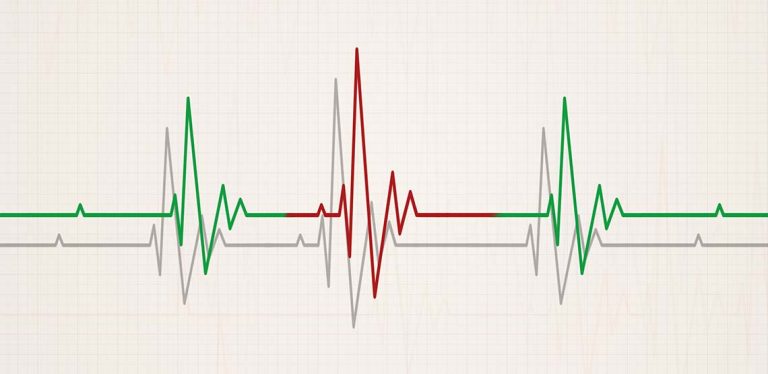What is Aplastic Anemia?
You've likely heard of anemia, the condition where the body does not have enough healthy red blood cells to carry oxygen to its cells. This condition can cause symptoms, ranging from fatigue to cold hands and feet. However, there are other types of anemia that all have their own causes and treatments. Today we are going to dig into aplastic anemia by looking at how it shows up in the body, the risk factors for this condition and the top six symptoms to look out for. So, what is aplastic anemia? Let’s get to it.
Aplastic Anemia Explained
Aplastic anemia is a condition where your bone marrow, the soft spongy tissue packed with blood vessels found in the center of most bones, does not make enough red or white blood cells. This condition is likely due to damage to the stem cells. Our red blood cells contain hemoglobin, the protein that transports oxygen to cells throughout our bodies. When the body does not make enough red blood cells, oxygen is unable to move to our cells to provide energy.
Since the stem cells in bone marrow also make white blood cells and platelets, folks who develop aplastic anemia are also more prone to infections and have blood that is thin and unable to clot effectively.
The most common cause of aplastic anemia is an overactive immune system that attacks the stem cells in bone marrow. Some other risk factors and causes include:
- Certain cancer treatments. Radiation or chemotherapy can damage stem cells and cause temporary aplastic anemia.
- Toxic chemical exposure. Being exposed to heavy metals, such as benzene, and those found in pesticides and insecticides, can increase your risk.
- Certain medications. These include anticonvulsants, antibiotics, or those used to treat rheumatoid arthritis.
- Autoimmune diseases. Having lupus can increase your risk.
- History of viral infections. These include hepatitis, HIV, Epstein-Barr virus, CMV, or parvovirus B19.
- Pregnancy. This can sometimes cause your immune system to attack your bone marrow.
- Comorbid with other disorders. This includes paroxysmal nocturnal hemoglobinuria, which causes red blood cells to break down too quickly.
Genetics can also play a factor. While there are many potential causes, sometimes this condition can develop for no known reason, in which case your doctor would classify it as idiopathic aplastic anemia.
What Are the Top 6 Symptoms of Aplastic Anemia?
Now that we understand the mechanism of aplastic anemia, let's take a look at some of the most common symptoms. Depending on the severity of the condition, some folks may have several symptoms, and some may not show any outward signs. If you are concerned, it is always worth talking to your doctor about your risk factors.
1. Fatigue and/or Weakness
When it comes to anemia, fatigue and weakness, especially in the muscles, is common. The reason someone with aplastic anemia experiences fatigue is because their cells are not getting enough oxygen to create energy and run efficiently due to a deficiency in red blood cells.
Red blood cells transport oxygen throughout the body with the help of hemoglobin, so without enough of them, there will not be enough oxygen to fuel cellular activity and function.
Related Search Topics (Ads)
2. Bruising and/or Prolonged Bleeding
Another common symptom of aplastic anemia is bruising or prolonged bleeding. Since the stem cells in bone marrow produce platelets, folks with aplastic anemia are deficient in these compounds, which thins the blood.
Without platelets to properly clot the blood after a cut, it takes a lot longer for bleeding to stop. It's not uncommon to have bleeding gums, blood in the stool, or nosebleeds. People with this condition may also bruise or bleed excessively from minor bumps and scrapes.
3. Skin Rashes or Abnormally Pale Skin
Many people with aplastic anemia may develop rashes on their neck, arms and legs. These rashes look like little clusters of red dots. These red marks can be flat or raised bumps, but it is unlikely that they will cause typical rash symptoms, such as pain or itching. These dots are actually tiny bruises, which are a result of a low platelet count. This rash is called petechiae, and the red dots do not disappear when you press on them.
Pale skin is a result of the skin cells not receiving enough oxygen from red blood cells.
4. Headaches and/or Dizziness
When brain cells do not receive enough oxygen from hemoglobin, it can cause symptoms, such as headaches or dizziness. Our brains use a lot of energy to function, and we need oxygen to produce that energy. Without it, we can be left feeling foggy and dizzy.
5. Rapid or Irregular Heartbeat
The heart muscle handles pumping blood throughout the body. When oxygen levels in the blood are low, the heart tries to make up for that deficiency by pumping more blood throughout the body. That overcompensation can lead to a rapid or irregular heartbeat, also known as an arrhythmia.
6. Frequent or Prolonged Infections and Fevers
Finally, another characteristic of aplastic anemia is that the bone marrow does not produce enough white blood cells. These cells are an important part of the immune system that helps the body fight off viral or bacterial infections. Folks with aplastic anemia are more likely to experience:
- Painful bladder infections.
- Lung infections that cause difficulty breathing or coughing.
- Sinus infections and chronic stuffy noses.
- Mouth sores and skin infections.
- Fevers.
If a person with aplastic anemia develops a fever, they should see their doctor right away.
When to See A Doctor
Although aplastic anemia is relatively rare, it can be fatal if left untreated. If you are experiencing any of the above symptoms or have any of the risk factors listed, it is worth going to your doctor and having a full CBC panel done. This blood test measures the amount of red blood cells, white blood cells and platelets. From there your doctor can make an informed decision on your current health status and treatment.

